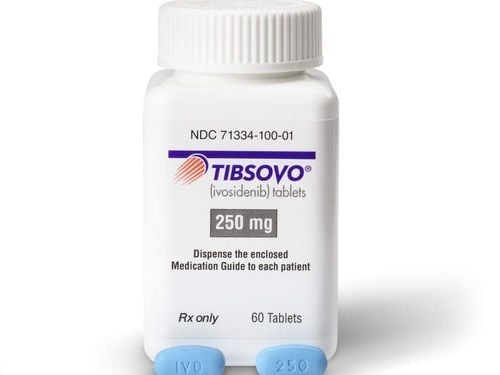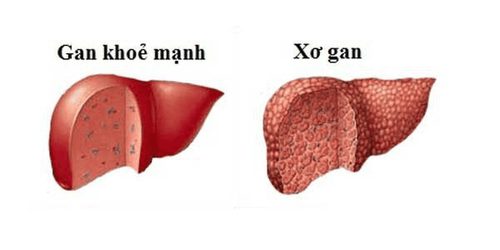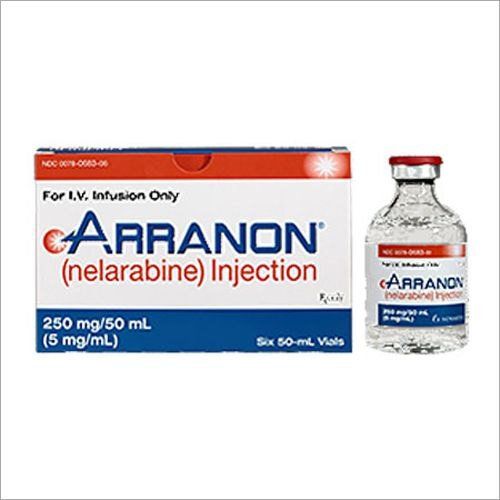This is an automatically translated article.
Bone marrow and stem cell transplants have become an important treatment to combat specific blood cancers. So what is bone marrow and stem cell transplantation in the treatment of blood cancer? What are the side effects of a bone marrow transplant or stem cell transplant? The following article helps you understand more about bone marrow & stem cell transplantation in the treatment of blood cancer.
1. What are bone marrow and stem cell transplants?
Stem cells are immature blood cells found in your bone marrow and blood, and they make the blood cells you need to survive. However, blood cancers, chemotherapy, and radiation can all damage your bone marrow, thereby affecting your body's ability to make more blood cells. This is where stem cell transplants can help. Transplanted cells (taken from bone marrow, peripheral blood, or umbilical cord blood) replace the destroyed bone marrow, so your body can produce healthier, life-sustaining blood cells.
Also, a stem cell transplant from a donor can actually help treat specific types of cancer. Sometimes, the donated cells recognize and kill cancer cells more effectively than the person's original immune cells.
Bone marrow and stem cell transplant is a medical treatment that replaces bone marrow with healthy cells. Transplants are used for certain types of cancer and other diseases of the bone marrow. To date, more than one million stem cell/bone marrow transplants have been performed worldwide and this number continues to grow. After a transplant, many people with blood cancer live longer or have been cured.
Like any cancer treatment, it can cause side effects. These are different for everyone. They depend on the type of implant, your general health, and other factors.
* Treatment of blood cancers for which bone marrow and stem cell transplants can be performed include:
Acute Lymphocytic Leukemia (adults and children) Acute myeloid leukemia (AML) (adults) and children) Chronic Lymphocytic Leukemia (CLL) (adults and children) Chronic myelogenous leukemia (CML) (adults and children) Non-Hodgkin Lymphoma (NHL) (adults and children) ) Hodgkin Lymphoma (adults and children) Multiple myeloma (adults) Myelofibrosis (adults) Osteosarcoma (children) Neuroblastoma (children) Ewing sarcoma or Ewing sarcoma (children) Wilms tumor (tumor) nephroblastoma ) (children) Myeloblastoma (children) Rhabdomyosarcoma (children)
2. Methods of bone marrow transplantation and stem cell transplantation in the treatment of blood cancer.
There are two main types of stem cell transplantation, classified according to the donor's marrow source: autologous transplantation and allogeneic transplantation.
* Autologous Transplant (AUTO)
Autologous transplantation is obtained from your own stem cells, usually from peripheral blood that is frozen and preserved. Your stem cells must be harvested from your blood before you receive any cancer-killing treatment.
The advantage of autologous transplantation is that you don't have to worry about graft-versus-host disease, where the transplanted cells attack your body.
* Allogeneic Transplant (ALLO)
Allogeneic transplantation is performed using donor tissue from a genetically matched person, usually a close family member. Stem cells can be obtained from peripheral blood, bone marrow, or umbilical cord blood. When a perfect genetic match cannot be determined, a heterozygous gene transplant can also be performed. In this case, stem cells that are derived from peripheral blood and undergo a purification process to compensate for the mismatch carry a higher risk.
One possible advantage of an allogeneic transplant is that the donor stem cells make their own immune cells, which can help destroy the cancer cells that remain in your body after during treatment. However, graft-versus-host disease is a risk when performing heterozygous gene transplantation
3. Side effects of bone marrow transplantation and stem cell transplantation in the treatment of blood cancer.
Some side effects can be caused by a stem cell transplant. Some problems occur during treatment to prepare your immune system for the transplant, while other symptoms may appear during and after the new stem cell infusion. Side effects can range from mild to severe and life-threatening,
3.1. Side effects of autologous transplantation (AUTO) Many of the side effects of AUTO transplantation are similar to those of chemotherapy and the side effects of radiation therapy. The most serious side effect is a higher risk of infection due to your low white blood cell count.
* Infections
Chemotherapy and some other treatments weaken your body's infection-fighting system, called the immune system. This is especially true of bone marrow/stem cell transplant treatment, as bone marrow is part of the immune system. When your immune system is weakened, your body can't defend itself against germs. Most of these germs already live in your body. When your immune system is strong, these germs don't make you sick. But once implanted, they can cause infection.
Fortunately, most of these infections are fairly easy to treat with antibiotics. About 2 weeks after your transplant, immune system cells called neutrophils should begin to recover. Neutrophils prevent some common germs from making you sick.
You have the highest risk of infection during the first few weeks after the transplant. However, your immune system may take a long time to recover from a transplant. Your doctor will likely prescribe medication to fight infection for a year or more after a bone marrow/stem cell transplant. Your doctor or healthcare provider will give you information about ways to reduce your risk of infection by taking precautions during your recovery.
* Other immediate side effects
The following side effects may develop shortly after high dose chemotherapy for AUTO implantation.
Nausea and vomiting Pain in your mouth Fatigue Low platelet count, making it harder for blood to clot Low red blood cell count, causing anemia Diarrhea * Long-term side effects
Some side effects of transplant occurs months or years later. These may include:
Infertility Cataracts, an eye condition that causes blurred vision Sexual side effects and early menopause Thyroid problems Lung or bone damage Another cancer 3.2. Side effects of an allogeneic transplant (ALLO) The side effects of an ALLO transplant are similar to the side effects of chemotherapy and the side effects of radiation therapy. This includes a high risk of infection. And, you may experience side effects from receiving someone else's stem cells, including a higher risk of infection and a higher risk of graft-host disease (GVHD).
Many people have a “graft cell against cancer effect” along with GVHD. This is because the new stem cells recognize and destroy cancer cells that are still in the body. This is the main way to transplant ALLO to cure cancers like leukemia.
* Infection
When you have an ALLO transplant, your doctor will give you chemotherapy, with or without radiation, or other drugs to keep your body's immune system from destroying new cells . These treatments affect your immune system and make your risk of infection higher. A weak immune system makes you more susceptible to infections. You're at greatest risk of infection during the first few weeks after receiving donor cells. This risk decreases over time, but reducing the risk of infection is an important part of a patient's long-term recovery.
* Graft-host disease
GVHD occurs if donor stem cells attack your body causing inflammation. Even if your donor is a 100% match, you can still have GVHD. Your doctor will probably prescribe you medication to prevent GVHD. If you still have GVHD, your doctor will give you more medicine to keep your condition under control. GVHD can be life-threatening in some cases.
There are 2 types of GVHD: acute and chronic. Both can range from mild to severe.
Acute GVHD This form of GVHD occurs fairly rapidly, within the first 3 months after ALLO transplantation. It usually affects the skin, intestines, and liver. This can cause rash, diarrhea, and jaundice. Jaundice is a liver problem that causes the skin and whites of the eyes to appear yellow.
The treatment for GVHD is to use drugs to suppress T cells. T cells are white blood cells that help the immune system fight infections. Stopping them will keep your transplanted immune system from attacking your own cells.
Chronic GVHD Chronic GVHD usually develops more than 3 months after ALLO transplantation. It can last a few months or the rest of your life.
Chronic GVHD may or may not cause symptoms or require treatment. Or you may need treatment for specific problems. For example, you may experience dry eyes and dry mouth. Your liver may be mildly irritated. Or you may have other conditions, such as the skin losing its ability to stretch. This condition is called scleroderma. Other problems can include joint and muscle pain, weight loss, infections, and shortness of breath.
Chronic GVHD can be treated with medications called corticosteroids. If this doesn't work, you can take other medicines to make your immune system work less well.
* Other immediate side effects
The following side effects may develop soon after high dose chemotherapy for ALLO transplantation.
Difficulty sleeping Nausea Dermatitis Mucositis (causing difficulty eating) Anorexia Diarrhea Fatigue * Long-term side effects
Some side effects of a transplant occur months or years later. These may include:
Nausea vomiting Diarrhea Fatigue Loss of appetite Hair loss Skin rash Decreased sex drive Another cancer You may have fewer long-term side effects if you have chemotherapy before the transplant Your grafting is less intense. People with lower intensity chemotherapy tend to have less long-term effects.
Talk to a specialist about possible side effects of a stem cell transplant. They can help answer your questions and make a plan to manage side effects.
Please dial HOTLINE for more information or register for an appointment HERE. Download MyVinmec app to make appointments faster and to manage your bookings easily.
References: shebaonline.org, cancer.net













